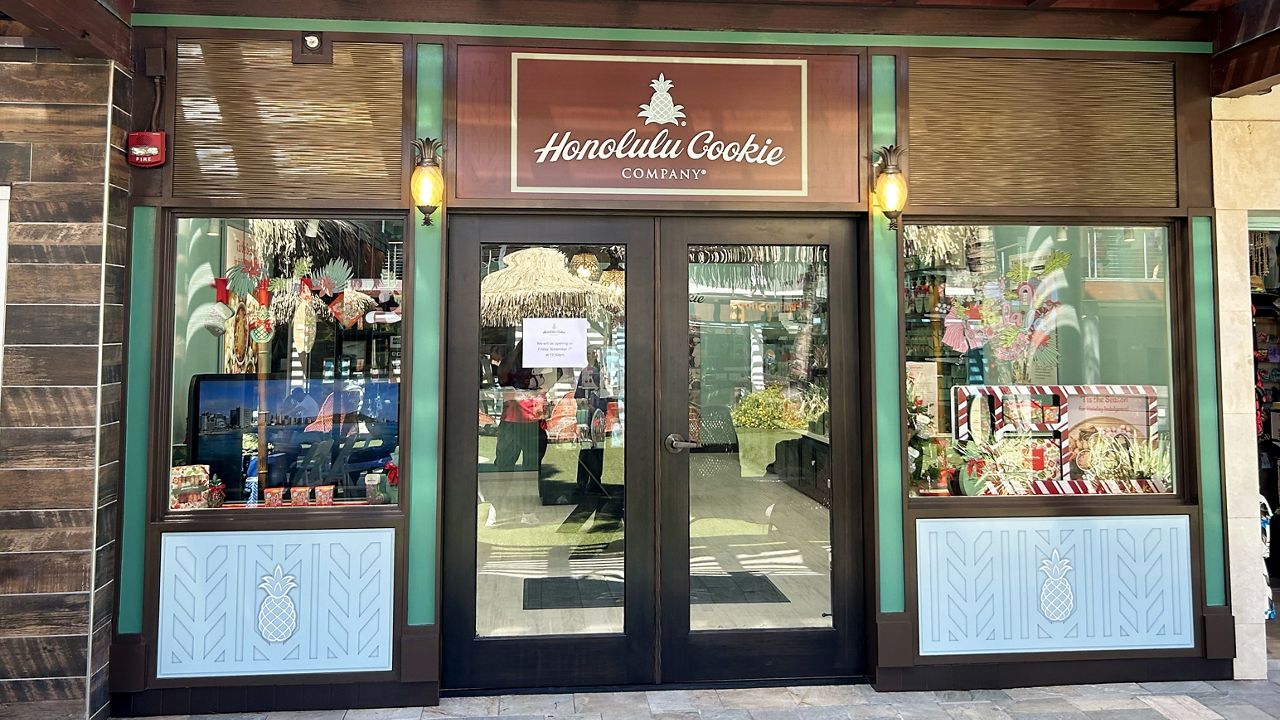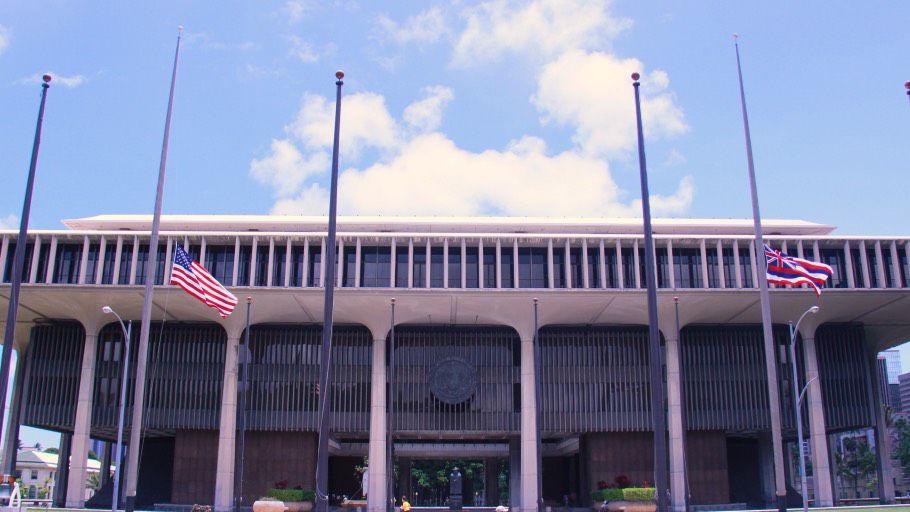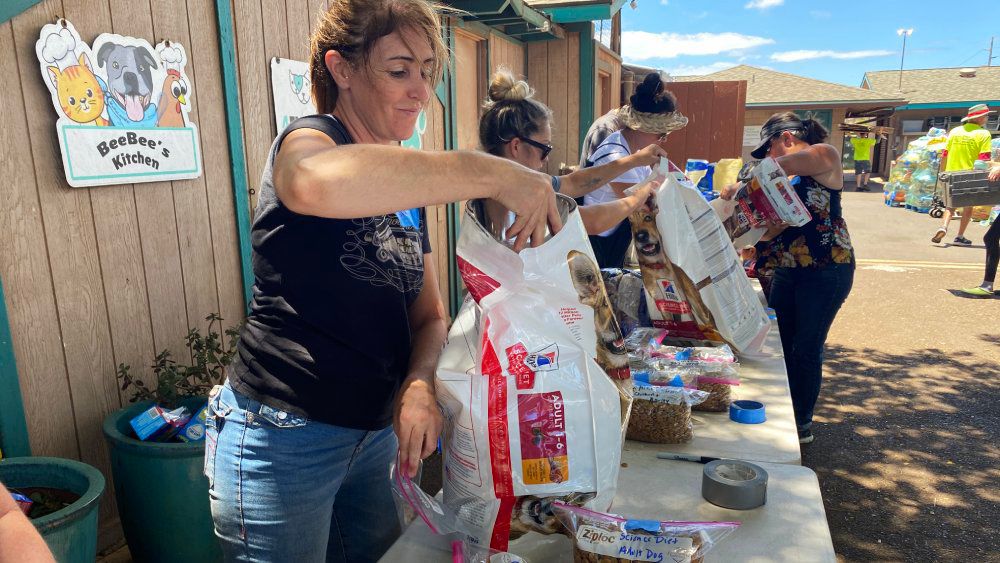PEARL HARBOR, Hawaii — Eighty-two years after that Day of Infamy, the dwindling ranks of survivors of Japan’s attack on Pearl Harbor still solemnly cherish their good fortune.
On the morning of Sunday, Dec. 7, 1941, Herbert Elfring was a 19-year-old private in the Army’s 251st Coastal Artillery assigned to a short-range radar station at Camp Malakole, about three miles from the U.S. Pacific fleet at Pearl Harbor. He heard bombing and planes in the distance but assumed it was a drill.
Elfring, 101, originally from South Dakota, recalled his close call to Spectrum News on Thursday at the 82nd Commemoration of the attack from the shore across the U.S.S. Arizona Memorial. (Elfring's account can be heard in the video clip above.)
“I had just finished breakfast. I was reading what was happening for the coming week. … I was a page into it,” Elfring said. “I heard this plane coming. And next thing, there was a line of bullets about 15 feet away from me – a stream of bullets. And I looked up and saw the red ball, on the airplane, and I said, ‘My god that’s the Japanese airplane!’ And then all hell broke loose from then onward. Then word got out that we were being attacked.”
Elfring and his crew sprang into action to defend the station. He still has a hard time believing his luck; 2,300 servicemen were killed that day.
“I didn’t get hit. It was a miracle,” said Elfring, who was discharged as a captain in 1945. “It was a lucky day for me. Not lucky for a lot of others.”
As of 2022, there were about 1,500 Pearl Harbor survivors, according to the Dept. of Veterans Affairs. Twenty Pearl Harbor survivors who died in the past year were featured in Thursday's ceremony program – men such as George Colburn, Bob Batterson and James DeWitt.
After a moment of silence at 7:55 a.m. – the moment the attack commenced on Dec. 7, 1941 – the 199th Fighter Squadron of the Hawaii Air National Guard and the 19th Fighter Squadron of the U.S. Air Force executed a missing-man-formation flyover of the harbor in three F-22 Raptors.
The U.S.S. Decatur, a destroyer, then performed a pass-in-review near the Arizona Memorial with its crew at attention on deck.

Ira “Ike” Schab, 103, was among the group of five Pearl Harbor survivors in the front row for Thursday’s ceremony, themed “Legacy of Hope.” Several hundred people filled chairs behind them under two long tents, including a handful of non-Pearl Harbor World War II survivors and eight women known as “Rosies,” or women who worked for the war effort under the Rosie the Riveter campaign.
Schab, of Beaverton, Ore., was a tuba player for the Navy assigned to the U.S.S. Dobbin, a destroyer tender around the bend of Ford Island from Battleship Row, a primary target of the Japanese planes. When the attack began, he ditched his equipment to help deliver ammunition to gunners.
“You feel like you’re in a trance,” Schab told Spectrum News of what he recalled from that day. “That’s the best way I think I can describe it. You don’t have any original or individual thoughts. Things were happening; you’re responding as best you can. That’s about it.” He paused. “Hopefully you don’t screw things up.”
Schab, who was accompanied by his son, retired Navy Cmdr. Karl Schab, said he was glad to see his fellow veterans sitting in the front row. The veterans chatted with each other between frequent interview requests from media.
It was Schab’s second time attending a Pearl Harbor anniversary.
“My emotions are flooded with, ‘boy am I glad to be here,’ you know, because it could’ve been a whole different picture,” he said. “Gratefulness, I think, is a good word. It’s hard to describe satisfactorily.”
The Rosies were a featured group this year. They sat right behind the WWII veterans.
Caroline Kilgore, 97, made the trip from Arizona to be honored at the ceremony for the first time, though she had visited Pearl Harbor several times over the decades.
She was a 17-year-old high school senior in Illinois when she began work in 1942 on B-17 aircraft wings. Given her small stature, she was assigned to be a bucker on the inside of the wing to help lock in rivets from the riveters on the outside.
Kilgore had to sew up her one-size-fits-all blue coveralls that dwarfed her and wore a hair net that she described as "ugly" and resembling a fishing net.
“It was a job I liked but didn’t like, and I would prefer not doing it but we did it because we needed freedom for America,” Kilgore said. “A lot of those boys went in at 16. And a lot of them didn’t come back. Freedom is not cheap.”
Spectrum News' Nuy Cho and Sarah Yamanaka contributed reporting to this story.
Correction: Caroline Kilgore worked on B-17 aircraft wings. An incorrect aircraft was listed in a previous version of the story.










